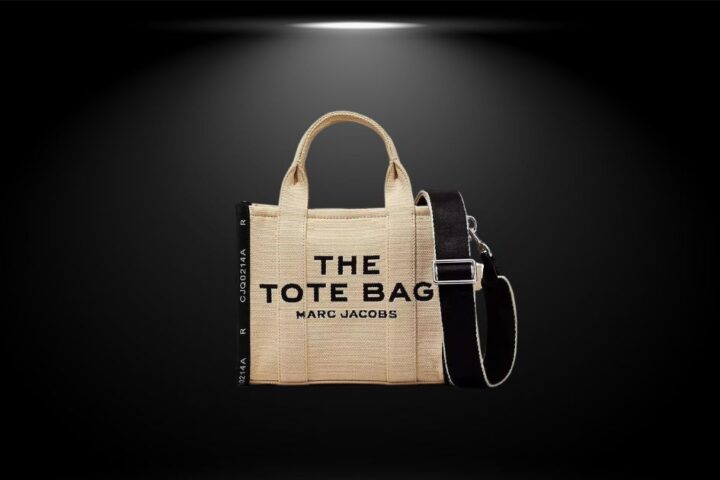From small custom production houses producing elementary floral scents to a massive billion dollar industry merely selling an image in a bottle, the perfume industry has seen to grow manifold in the recent years. The industry having expected to touch USD 52.4 billion by 2025[1], constantly strives to devise new fragrances which aim to convey abstract meanings and associations. For decades innovation has been the key factor for development of world-famous fragrances and with increasing involvement of innovation and imitation, but now with a risk of abuse the industry requires a need for the protection of its Intellectual Property.
The competition amongst perfume brands in the industry is fierce. Companies on an average tend to invest approximately 8% of their net sales in R&D[2]. A high-end fragrance being highly lucrative generates almost more than 1 billion dollars per year as sales, yet it is shocking to witness that the world’s most famous perfumes still don’t enjoy IP protection and have been discarded as a form of artistic expression. And as per India, despite contributing approximately dollar 500 million[3] to the global fragrance economy under Fashion Industry, the Indian legislation does not explicitly provide protection for smell per se. However, protection can be provided to the chemical proportion, mixture of components, specific synthetic olfactory elements or a formulae developed for aroma to be manufactured etc.
The composition of a fragrance is a complicated mixture of synthetic as well as natural fragrances, released in a temporal sequence and it being a largely subjective sensory perception is perceived differently by individuals. “The inexorable consolidation in the fragrance manufacturing industry over the past century has made the remaining fragrance houses more vulnerable to misappropriation of their intellectual property, particularly of fragrance formulas that they develop at significant expense.”[4]
The perfume industry is one of the industries wherein know-how is widely shared and there is absolutely no shortage of imitators blatantly copying the industry bestsellers. With the advent of the digital revolution, technical equipment in the field of smell analysis has made a significant progress. This has lead to not only blatant copying of brand names by infringers but also infringement of the aesthetic intellectual creation ie. the scent of the perfume. With these technological advances the fragrance industry has become more vulnerable than ever to the information and formulas that are intended to remain secretive. Despite the increasing uncertainty, intellectual property protection for perfumes and fragrances remain weak leading to detrimental consequences risking a dramatic reduction in innovation, creativity and originality. Therefore, in the recent years the industry has seen to gain momentum in its pursuit for various forms of legal protection.
One of the landmark cases of Lancome v. Modefine[5] wherein the French supreme court refused to provide IP protection to perfumes stated that copyright is only meant to protect creations which hold a concrete form, are identifiable and portrays sufficient distinctive character capable of being communicated. The court held that the unique scent of a perfume is not at the very least to assume such a form or function and hence is not worthy of being protected. The judgement was widely criticised by legal practitioners around the world who believed that creation of perfumes having original identities consist a piece of work by an artist. However, in cases of Lancome v/s Kecofa of 2006 and in Loreal v/s Bellure of 2010, the Holland High Court and the European Court of Justice upheld the protection of perfumes as a copyright and trademark respectively.
It has been argued that fragrance is a product rather than a trademark. Chanel being the first brand attempting to register the smell mark faced rejection on the ground that smell is functional to the product, the perfume was based on the very existence of the fragrance. Perfumes such as Chanel No. 5 having widespread consumer recognition and having caught the industry’s attention ever since its creation in 1921 are still intelligible for protection, only because they aim to serve a mere function ie. making the user smell better.
The functionality doctrine is based on the notion that any product feature which has a particular function is ineligible for trademark protection. The result of the applicability of the functionality doctrine to fragrances of a perfume is ironic. A fragrance being utmost essential to the purpose of a perfume makes it functional and thereby ineligible for registration. This remains true even if the fragrance has successfully acquired distinctiveness ie. when consumers can link the fragrance to a particular perfume with ease. The functionality doctrine aiming to prevent inhibition of a legitimate competition “makes sense only in theory”.[6]
It is appalling to witness that fragrances being so well known that its users infallibly and instantly link the scent to a particular brand are not provided due protection as a trademark. A perfume to be registered as a trademark should be represented graphically and must be ‘clear, self-contained, intelligible, precise, easily accessible and objective’[7] something which is impossible to attain with perfumes. Therefore, the very likelihood of protection granted to perfumes under trademarks is slim.
The United States Patent and Trademark Office (USPTO) has stated that since scents are not explicitly excluded from the Act, they are therefore eligible for registration under Section 2(f) of the Lanham Act, affirming that fragrances and scents can function and fulfil the objectives of a trademark. The very first scent trademark which was recognised by the 1990 Trademark Trial Appeal Board (TTAB) decision of In Re Clark was for the “high impact, fresh, floral fragrance reminiscent of Plumeria blossoms”. However, the protection provided to perfumers in USA is still unclear and subject to controversial debates due to the doctrine of functionality.
Whereas, the Indian Trademark Law defines trademark as, “a mark capable of being represented graphically and which is capable of distinguishing the goods or services of one person from those of others”.[8] The definition being generic in nature does not completely eliminate the possibility of registering a non-conventional trademark. However, the mandatory condition of graphical depiction of a trade mark on paper in durable form[9] for the purpose of registration acts as an impediment and poses a hurdle in the way of registration of unconventional trademarks like perfume marks. Therefore, the Indian Trademark Law currently doesn’t permit the registration and protection of olfactory trademarks in the perfume industry.
As per copyright-ability of perfumes is concerned, it is the copyright protection that extends to any ‘artistic work’. The definition of an ‘artistic work’ per se does not provide for the category of scents and fragrances, however it can be amended to include so. The Indian Copyright Act, 1957 defines artistic work as, “(i) a painting, a sculpture, a drawing (including a diagram, map, chart or plan), an engraving or a photograph, whether or not any such work possesses artistic quality; (ii) a[work of architecture]; and (iii) any other work of artistic craftsmanship;”[10], therefore the very innovation and creation of a unique fragrance can be protected under the phrase, “artistic craftsmanship.” The Indian law not explicitly defining the term “craftsmen” should include perfumers by general interpretation since as a creator of an artistic work, the intention of the perfumer too is to devise new fragrances activating the customers.
The landmark case of Lancome v.s Kecofa has underdone certain controversies pertaining to the protection being provided to fragrances. The Dutch Supreme Court was presented with the issue whether Lancome’s perfume Tresor be protected from its scent alike- Female Treasure by Kecofa. Wherein two brands were in a dispute over the fragrance of a perfume, the court in this controversial judgement unbelievably ruled that Tresor, the Lancome’s perfume enjoyed copyright protection and that the copyright was infringed since 24 out of 26 ingredients had been used. The high court ruled that the fragrance of a perfume fulfils the requirements of being traceable and unique even if they are only perceptible through nose and is therefore sufficiently concrete as well as stable to be considered a ‘work’ granting protection under the copyright law.
France being a renowned hub for the booming perfume industry has also witnessed absence of adequate IP protection. The French Supreme court has not only once, but twice taken the stance that works which are intended merely for consumption primarily through the sense of smell (perfumes), lack creativity to constitute copyrightable expressions under the French Law. The creators of perfumes are more akin to craftsmen, whose works are therein not copyrightable, than to writers, whose works are adequately protected under the law. A similar stance can be witnessed in the case of Bsiri-Barbir v. Haarman & Reimer wherein the French court ruled that perfumes, “are not eligible for protection under French copyright law because they are a product of the application of purely technical knowledge and lack, therefore a discernible association with the individual personalities of their creators.”[11] However, recently some French courts had ruled that perfumes should be eligible for protection. In 1999 the French tribunal ruled that the perfume ‘Angel’ by Thierry Mugler was not merely a product of technical skill, but constituted an original work therein eligible for copyright protection.[12] Following the footsteps of the Angel decision the Paris Court in January 2006 decided that perfumes by l’oreal, Prestige, Parfums cacharel, Parfums ralph lauren and Parfums Guy laroche could be provided with protection under copyright law, therefore increasing the scope of protection in the perfume industry.
The U.S. Copyright Act provides that, “copyright protection subsists, in accordance with this title, in original works of authorship fixed in any tangible medium of expression, now known or later developed.”[13] With a palette of a hundred varieties of natural as well as synthetic scents, with variations in quantity and ratio, a perfumer has an endless ability to create and invent original perfume fragrances that differ from various other preexisting perfumes hence making them qualify as an original work. The US House report had foresaw that certain mediums of artistic expressions can develop into creative works and that the US Copyright Act should aim to extend to such works. The perfume industry appears to have evolved to such a state of creativity.
Whereas, the fragrance industry in order to avail protection as a patent will have to prove that the fragrance of the perfume involves an inventive step and is new and innovative. One can sought protection under patent laws for any newly created scent molecules or any formulations of fragrances which comprise of these molecules. However, the patent mechanism being extremely expensive, time consuming and insufficient protection being provided – the industry has erred on the side of caution and has not been keen on relying upon patents for protection. Their market value being extremely high, they do not prefer risking their formula to be revealed and disclosed in order to gain protection for a particular time frame. Furthermore, currently the patent laws around the world only provide for the composition of a perfume to be patented, the fragrance itself cannot be patented since it doesn’t qualify as a composition of matter.
However, trade secrets have acted as a shield and an alternative to protect one’s fragrance creation in the perfume industry. This being the most common method of seeking protection, aims at keeping confidential the development of each unique smell. “The fragrance itself is a formula—an amalgamation of other scents to create a new, unique product not commonly known to others. The exclusivity of this new product is what makes it commercially valuable to the owner. Since no one else knows the formula, no one else can create and sell it, which, in turn, directs consumers to buy the fragrance from the owner. Due to this competitive advantage, it is beneficial to the owner to take reasonable measures to keep the formula a secret—which most perfumers do.”[14] A perfume’s recipe can be protected as a trade secret by the law of confidence which prevents 3rd parties from illegitimately using or disclosing the ingredients of the formula recipe. This prevents competitors using the same formula or procedure used to make a particular perfume. Despite adequate protection being provide under this field of IP, perfumers seek to obtain protection under other domains due to technological advancements lies reverse engineering wherein fragrances can be reengineered with ease.
Since the creation of perfumes is a highly creative endeavour, the works created therein should receive adequate protection in the same manner as other innovative and creative works. Irrespective of a fragrance being innovative, novel and appealing, its protection has always been uncertain. To deprive the perfumers in the industry of legal protection for their creative works would not provide appropriate incentive and rewards for their artistic endeavours. Over the past decade advances in analytic technology along with increasingly stringent government regulations have challenged the perfume creators’ efforts to maintain control over extremely valuable assets ie. information relating to the creation and invention of perfume fragrances. Once the information is disseminated, there is hardly any recourse under the law to prevent further harm. Knowing that IPR is still at a niche stage in various countries around the globe including USA, UK, India and other European countries – the protection of fragrances under the intellectual property laws is subject to many difficulties and controversial debates. However, a carefully defined yet limited scope for legal rights in the perfume industry will permit fair competition by creating a favourable environment for continued successive growth and expansion of the industry.
References
[1] M. Shahbandeh, Global perfume market size 2013-2025, https://www.statista.com/ statistics/259221/global-fragrance-market-size/.
[2] Average number for R&D investments for fragrance and flavour companies, based on 2017 figures published by IFF, Givaudan, Symrise and Firmenich. : https://ifrafragrance.org/docs/default-source/policy-documents/pwc-value-of-fragrance-report-2019.pdf?sfvrsn=b3d049c8_0
[3] Fragrance & Flavor Industry in India, MSME, https://msme.gov.in/fragrance-flavour-industry-india.
[4]Law professor Charles Cronin, University of Southern California
[5] December 10, 2013
[6] Franco Galbo, IP Watchdog
[7] Ralf Sieckmann v. Deutsches Patent und Markenamt, Case C-273/00, 12 December 2002, European Court of Justice.
[8] Section 2(1)(zb), Trademarks Act, 1999
[9] Trademark rules, 2002
[10] The (Indian) Copyright Act 1957S. 2 cl(c).
[11] charles cronin, Genius in a Bottle p.303, citing Bsiri-Barbir v. Haarman & reimer, cour de cas- sation [cass. 1e civ.] Paris, June 13, 2006, d. 2006, Somm. 1741, J. daleau.
[12] Mugler v Molinard, tribunal de commerce [t.com.] [commerce ct.] Paris, 15e ch., Sept. 24, 1999, Gaz. Pal. 2001, 17-18.01, no. 17-18.
[13] 17 u.S.c. § 102(a) (2009).
[14] Margaret Duangpanya, The Sweet Smell of Protection: The Scope of Intellectual Property Rights in Perfume, Lumen










